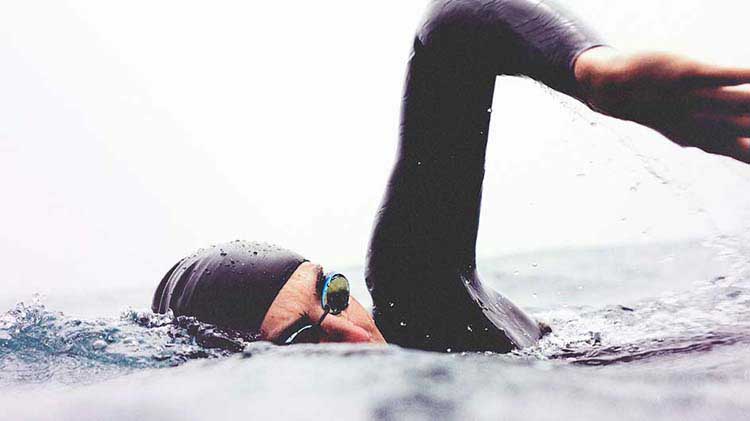Testing the waters: Tips for ocean swimming safety
Follow these ocean safety tips when you are out in the open water swimming.
Ocean swimming is different from swimming in a pool: You have to watch out for currents, waves and other natural dangers.
Ocean swimming basics
First things first: Strong swimming skills are essential in the ocean's unpredictable environment. Never go into the ocean if you can't swim. Also:
- Know where to swim. Always swim in a designated ocean swimming area supervised by lifeguards. Stay close to shore so you can be seen and rescued quickly if needed.
- Know when to swim. Daytime is considered the safest time for ocean swimming. Visibility is low in early morning hours and at dusk, and predatory animals in the water tend to move closer to shore at night.
- Wear sunblock. Sunscreen is important for any outdoor activity but can especially be important when swimming due to the increased sunburn risk caused by reflective water.
- Don’t swim alone. Even if you are an experienced swimmer, it’s important to have a swimming buddy that can signal for help if needed.
- Swim sober. When navigating unpredictable ocean waters, avoid using alcohol or drugs (recreational and/or certain prescriptions). These can impair your judgment, balance, coordination and your body's ability to stay warm.
Ocean swimming risks
The vast ocean is a complex body of water that can be unforgiving if you approach it without caution. Before swimming away from shore, understand these hazards:
- Severe weather can be life-threatening when you’re in the ocean. If a storm is approaching, get out of the water until it subsides. Get out immediately if you see lightning.
- Large waves are more powerful than you might think. Dive under one before it breaks. And remember: Never turn your back to the ocean when you're in the water. Rogue waves or undertow can happen at a moment's notice.
- Shore breaks happen when a wave breaks on land, which can knock swimmers down. To help avoid serious injury, stay away from beaches with rocky outcroppings or a steep slope into the water.
- Inshore holes are long trenches that run parallel to the beach. They can surprise waders who are expecting shallow water. Make sure your children can swim and stay with them in any water.
- Cold water temperatures can shock your body, elevate your heart rate and blood pressure and can slow your muscles, making it difficult to swim. Remember to test the water before entering.
- Underwater hazards like rocks, debris and vegetation may cut or snag your feet and legs. Keep a watchful eye while you wade.
- Aquatic life such as sharks or jellyfish can occasionally be trapped by a low tide, and prove a threat to swimmers. In addition to keeping an eye out for yourself, listen for guidance from lifeguards as they will commonly spot them first.
Rip currents
Rip currents are narrow channels of fast-moving water that can pull you into deep and dangerous waters. They are the most common source of ocean water incidents, accounting for over 80% of rescues performed by surf beach lifeguards. Here are a few tips from the National Oceanic and Atmospheric Administration (NOAA) for when you find yourself caught by one:
- Stay calm and don’t fight the current.
- Swim parallel to the shore until you are free from the current, then slowly shift to swimming back to shore at an angle.
- Don’t overexert your muscles when you start to fatigue, you can conserve some energy by floating on your back and paddling with your legs.
- Call for help if you feel unable to get free. Don’t hesitate as the situation might worsen and you may quickly find yourself too far away for people to hear you.
Remember: A sunny day doesn't necessarily mean great ocean swimming conditions. Check your local surf forecast before heading to the beach to know what to expect.




